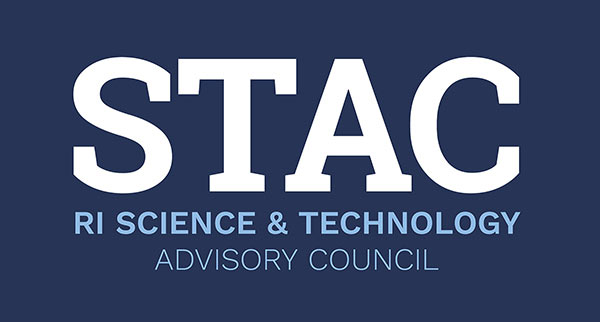Dr. Walt G. Besio
Professor of Biomedical Engineering, University of Rhode Island
In the early days of radio, loud buzzing and popping sounds were very much a part of the listening experience. Even now, it is not unusual to experience audio interference on cell phone calls.
In such cases, interference poses a minor inconvenience; but for neurological researchers using EEG (electrocephalography) to read brain activity, interference often poses a significant problem. Poor quality readings can slow advancements in the diagnosis and treatment of neurological disorders like epilepsy, a condition marked by abnormal electrical activity in the brain.

To get an EEG reading, researchers — doctors and/or scientists — attach electrodes to a patient’s scalp. Unfortunately, EEGs are often polluted by noise interference, which is why patients are often subjected to a more invasive medical procedure that involves placing electrodes on, or in, the brain to improve the signal quality.
Thanks to a STAC Rhode Island Research Alliance Collaborative Research Award, scientists at The University of Rhode Island, Brown University, and Astro-Med — a Rhode Island based biotech company — are collaborating to develop a technological advancement with the potential to radically reduce the number of invasive brainwave-measuring procedures.
The collaborators — Dr. Walt Besio, Associate Professor of Biomedical Engineering at URI, Dr. John Gaitanis, Assistant Professor of Neurology at Brown, and Astro-Med’s Michael Sullivan — are working to develop an innovation that greatly reduces EEG interference, “a commercially viable system to improve the diagnosis of epilepsy and other neurological disorders.” The work at the center of this STAC Award project is an exciting improvement on the conventional electrode used in EEGs.
During an EEG, electrodes are supposed to pick up brain activity; unfortunately, conventional electrodes pick up a lot more than brain activity: “When you move your eyes, move your head, move your mouth, move your toes — when you do anything, (conventional) electrodes pick up all those kinds of noises,” explains Professor Besio, inventor of the tripolar concentric ring electrode, or TCRE.

Besio’s invention resolves the issue of poor spatial resolution: “Instead of going with a single disc (as in conventional electrodes), I made an electrode that has concentric rings around the disc.” The result is greatly reduced signal interference — and much stronger signal readings.
Thus far, the TCRE appears to perform dramatically better than conventional electrodes. However, the more sensitive electrode does not work with off-the-shelf lab or clinical equipment. To address this problem, Besio set about creating a unique interface for the TCRE. Together with his research team — Dr. Oleksandr Makeyev, Xiang Liu, Zhenghan Zhu, and Yacine Boudria — Besio has created what the group terms “our own, custom pre-amplifiers” that allow the TCRE’s readings to successfully interface with commercially available amplifiers.
STAC is helping Besio move both innovations forward. The ultimate goal of the STAC award is to help move the invention along from bench to bedside to marketplace. The collaborative team reports that just such movement is underway: in the next month the TCRE will begin testing in a clinical setting at Rhode Island Hospital, under the guidance of collaborative partner Dr. John Gaitanis. The collaborators are confident that clinical testing will demonstrate their invention’s improved efficacy. Should their hunch prove correct, the group’s next goal will be FDA approval.
The TCRE presents a tremendous advancement not only in terms of neurological research, but also in terms of market potential. Under the guidance of Astro-Med’s Michael Sullivan, the project has received thoughtful, business-minded guidance throughout this latest, STAC-funded phase. Besio admits, “There’s definitely a push for speed,” from both the business and scientific communities. The collaborative aspect of the STAC Award has meant the project has been able to maintain scientific integrity while hewing to the early stages of its carefully considered business plan. While the TCRE has received attention from national investment interests, Besio is grateful to be working with Astro-Med, a local company which has an interest in growing the project here in Rhode Island.
The greater business community has already demonstrated material support of the TCRE’s development. When the time came to test the new electrode and its custom interface, manufacturers were quick to provide their conventional lab components, free of charge.

Among its many hopes for the TCRE, the STAC team hopes it will help neural scientists better locate where seizure activity occurs in epileptic brains. Right now, EEG electrode signals are sometimes so poor that even during a seizure, amidst the jumble of interference, conventional electrodes cannot distinguish where a seizure is occurring. The TCRE developers foresee their electrode helping doctors to place electrodes more precisely when invasive investigative procedures are necessary. The dream, of course, is that the TCRE will end the need for any such invasive procedure.
The entire STAC Award team is excited to move into the research market, but, as Besio points out, “The research market is very small. The key to getting out there and saving lives is getting into the clinical market.” Epilepsy affects 15 million Americans, and misdiagnoses can lead to serious cognitive impairments and behavioral problems. The sooner TCRE, with its improved signal reading capabilities, can be employed in a clinical setting, the sooner doctors and scientists can put it to work probing the mysteries of epilepsy. Besio has also received funding from the NIH to test the feasibility of using the same electrodes to provide noninvasive electrical stimulation to control seizures. The team hopes that someday they will have a complete system to help diagnose epilepsy and provide a therapy for it.
Recently, members of the TCRE team attended a Grand Challenges in Neural Engineering Conference where one of the biggest points of discussion was how badly neural scientists “want to use EEG to take readings, but can’t.” The recipients of this STAC/RIRA Collaborative Research Award are ready to change that.
